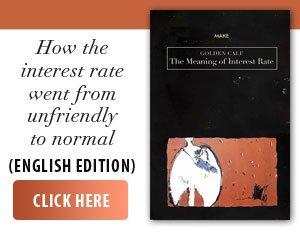The euro/dollar exchange rate failed to hold above 1.1450 this week, falling at one point even below 1.14, according to an analysis published by currencynews.co.uk, which highlights that the latest data on the US economy did not support additional dollar sales, but confidence in the US remains "extremely fragile”.
Analysts at Dutch bank ING say: "We do not see the euro/dollar rate moving into the 1.15-1.20 range unless there is significant fiscal instability in the US. For now, our base case scenario shows that the appreciation will lose momentum, with the euro trading close to $1.15”.
At the same time, according to Scotiabank, "short-term support is expected at $1.1350/euro, and short-term resistance is limited below the upper 1.15 area.”
The latest data on the US labor market shows an increase in job vacancies to 7.39 million in April, from 7.20 million in the previous month and above expectations of 7.11 million. After the publication of these data, the dollar appreciated, but failed to maintain its gains.
US trade policy remains in the spotlight, which may influence the future dynamics of the US currency.
Commerzbank analysts say: "Given such an unpredictable US trade policy, in which customs tariffs only increase, there is a risk that other countries will move away from the United States. In the long term, this is not good news for the US dollar.”
ING notes the positive news, noting: "Information suggests that China is now gaining leverage over the US through its control of chip supply chains and rare earths. Donald Trump and Xi Jinping are due to hold talks this week, and previous direct talks have eased some tensions. This leaves room for a possible positive surprise that could help the dollar.”
Commerzbank expects global trade relations to remain a key focus for the market, noting: "In the longer term, it will become increasingly clear that the US administration has no intention of abandoning tariffs. Even if US companies are currently avoiding passing on price increases to consumers due to the ever-changing tariffs, they will not be able to do so indefinitely. Depending on the Fed's reaction at that time, we will see whether the US dollar benefits from the tariffs.”
Bank of America shows that the US economy has been resilient and expects the next 2-3 months to be crucial, stating: "If the US economy continues to defy gravity, we expect investors to start ignoring the policy noise and return to buying US assets, supporting the US dollar. (...) If the US economy has a proper landing, we expect the dollar to weaken further to new lows this year".
• The franc has become a cause for concern for Switzerland
The Swiss franc, considered a safe asset in times of macroeconomic and geopolitical uncertainty, has appreciated in recent weeks, amid global trade uncertainties, and has become a source of concern for the Swiss authorities, reports CNBC, according to news.ro.
In recent weeks, US President Donald Trump's trade policies have caused volatility on global stock markets, prompting investors to seek safety, which has led to the Swiss franc appreciating by 10% against the US dollar since the start of the year. This appreciation has put deflationary pressure on Switzerland. Recent data shows negative inflation in May, with the consumer price index down 0.1% compared to last year. The cost of imported goods fell by 2.4% year-on-year, a significant impact in an economy where imports account for 23% of the consumer basket. According to Charlotte de Montpellier, senior economist at ING, "the strong franc has significantly reduced the cost of imported goods, directly affecting overall inflation in Switzerland.” In these circumstances, the Swiss National Bank (SNB) is expected to cut its key interest rate again, which was cut in March to 0.25%. There is even talk of a return to negative interest rates by the end of the year, if the franc continues to strengthen.
Another possible tool would be currency interventions, namely the sale of francs and the purchase of foreign currencies. However, this strategy risks tensions with the Trump administration, which in 2020 labeled Switzerland a "currency manipulator”.
The Swiss authorities are currently in talks with the US to avoid being labeled a "manipulator” and possible additional US tariffs on Swiss goods.
• 2025 - Fourth year of massive gold purchases by central banks
Central banks around the world are set to buy 1,000 tonnes of gold in 2025, in what would be the fourth consecutive year of massive gold purchases by central banks as they diversify their reserves beyond dollar-denominated assets, according to consultancy Metals Focus, according to Reuters.
The price of gold has risen 29% this year, reaching a record high of $3,500 an ounce in April, amid geopolitical tensions and economic uncertainty caused by US President Donald Trump's tariff policies.
The upward trend in gold prices was supported by central bank purchases, a crucial category for precious metal demand, which were, in the first quarter, in line with the quarterly average from 2022-2024, said consulting firm Metals Focus in a report published yesterday, according to Agerpres.
"The factors that were behind de-dollarization in recent years are still present. On the contrary, President Trump's unpredictable policies, his public criticism of Fed Chairman Jerome Powell, and the deterioration of the US fiscal outlook have further eroded confidence in the US dollar and bonds issued by the US Treasury as safe haven assets," according to Metals Focus.
Responsible for almost 25% of total gold demand, central banks are the third largest consumer of gold after the jewelry sector and physical investments. In 2025, central bank gold purchases are expected to fall by 8% compared to the record 1,086 tonnes recorded last year.
In the period January-March 2025, the central banks of Poland, Azerbaijan and China, which have been consistent buyers in recent years, were at the top of the list of official gold buyers, Metals Focus indicates, adding that the steady inflows into Iran also suggest new purchases by the Central Bank of Iran.
In contrast, gold demand from the jewelry sector has been strongly affected by the price advance. Gold jewelry production fell by 9% in 2024, to 2,011 tonnes, and is expected to fall by 16% this year, with India and China responsible for most of the decline.
The consultancy expects the average price of gold to rise 35% this year, after a 23% increase in 2024, to reach $3,210/ounce, "with further increases possible in 2026.”

























































